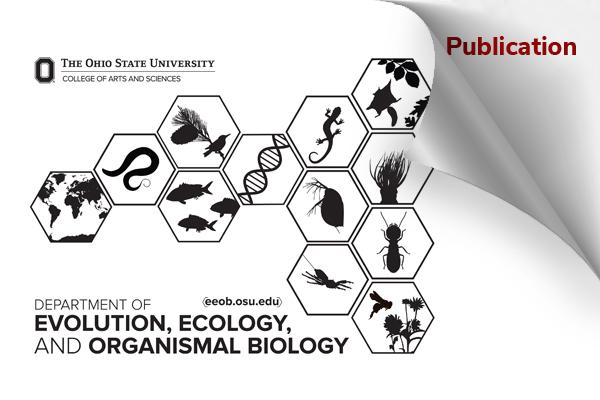EEOB Publication - Goodell

Prospects of pollinator community surveillance using terrestrial environmental DNA metagenetics
Grace Avalos, Regina Trott, John Ballas, Chia Hua Lin, Clayton Raines, Deborah Iwanowicz, Karen Goodell, Rodney T Richardson. 2023. DOI: 10.1002/edn3.492 .
Abstract
Current pollinator survey methods exhibit bias, require highly-trained practitioners, and are difficult to scale to large sample sizes. High-throughput sequencing of terrestrial eDNA could provide a complementary tool for studying pollinator communities, but eDNA methods have not been extensively evaluated. We conducted metagenetic
analysis of whole arthropod community eDNA from 20 flower and seven honey beecollected pollen samples and compared eDNA-derived data with traditional nettingbased surveys of the pollinator communities present during sampling. We focused our analysis on Anthophila (bees) and detected eight bee genera belonging to four families across COI, 16S, and 28S markers. Results varied considerably by marker and eDNA substrate. Detected bee genera were plausible for the study system and about 43 percent of total bee genera were detected with both eDNA and net-based surveys, though netting resulted in more detections across a wider diversity of genera. Data from sequenced controls suggest that eDNA identifications were unlikely to have resulted from cross-contamination. Our results demonstrate that bee communities can be documented with eDNA techniques and that the choice of marker and substrate substantially influences detection. Future improvements to our methods are required,but eDNA surveys appear well-suited to characterize diverse pollinator communities and provide novel sampling perspectives within plant-pollinator networks. Future efforts should focus on improving the selection of markers available for pollinator eDNA metagenetics, addressing taxonomic gaps within reference sequence databases and optimizing sampling and eDNA isolation protocols. We anticipate that such improvements are highly feasible and that eDNA will be a useful tool to those who study pollinators and plant-pollinator interactions.
